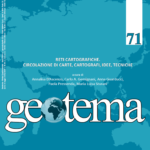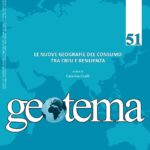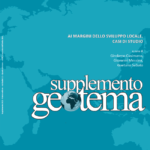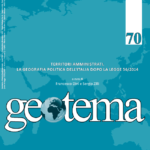Pierluigi De Felice, Luisa Spagnoli
Alla «corte» dei Gesuiti. Giovanni De Rosis fra fede e tecnica per il governo idraulico del territorio
Molti dei tecnici, architetti, ingegneri che, a partire dal XVI secolo, si occuparono di questioni idrauliche, impegnandosi attivamente in importanti opere relative alla regimentazione delle acque e alle bonifiche nella penisola italiana, provenivano dalla Compagnia di Gesù. Tra questi va annoverato Giovanni De Rosis (1538-1610), architetto e ingegnere idraulico, la cui biografia è una testimonianza della dedizione sua e dei suoi confratelli nella scienza idraulica e costruttiva, ma anche della circolazione di saperi e conoscenze «pratiche» acquisite dentro e fuori l’Ordine, in virtù di legami costruitisi nel tempo con tecnici provenienti da contesti geografici differenti e con una propria formazione nel campo. Principalmente carte d’archivio, mappe e disegni (immagini varie del territorio non necessariamente cartografie rispondenti ai parametri della «misura»), ci hanno consentito di ricostruire il legame profondo della Compagnia con il territorio, evidenziandone la capacità gestionale e politica, nonché di tessere una rete di relazioni attraverso cui consolidare le proprie conoscenze teorico-pratiche.
At the Jesuit «Court». Giovanni De Rosis between Faith and Technique for the Hydraulic Government of the Territory
Many of the technicians, architects, and engineers who, starting in the 16th century, dealt with hydraulic matters, actively engaging in important works related to the regulation of water and land reclamation in the Italian Peninsula, came from the Company of Jesus. Among these was Giovanni De Rosis (1538-1610), an architect and hydraulic engineer, whose biography is a testimony of his and that of his brothers’ dedication to the science of hydraulics and construction, but also to the circulation of knowledge and «practical» knowledge acquired inside and outside the Order, by virtue of ties built over time with technicians from different geographical backgrounds and with their own field of training. Mainly archival papers, maps and drawings (various images of the territory not necessarily cartographies meeting the parameters of «measurement»), have allowed us to reconstruct the deep connection of the Company with the area, highlighting its managerial and political capacity, as well as, to weave a network of relationships through which to consolidate its theoretical-practical knowledge.
Parole chiave: Gesuiti, ingegneria idraulica, relazioni e circolazione dei saperi, piante e disegni
Keywords: Jesuits, hydraulic engineering, relationships and knowledge circulation, plans and drawings









